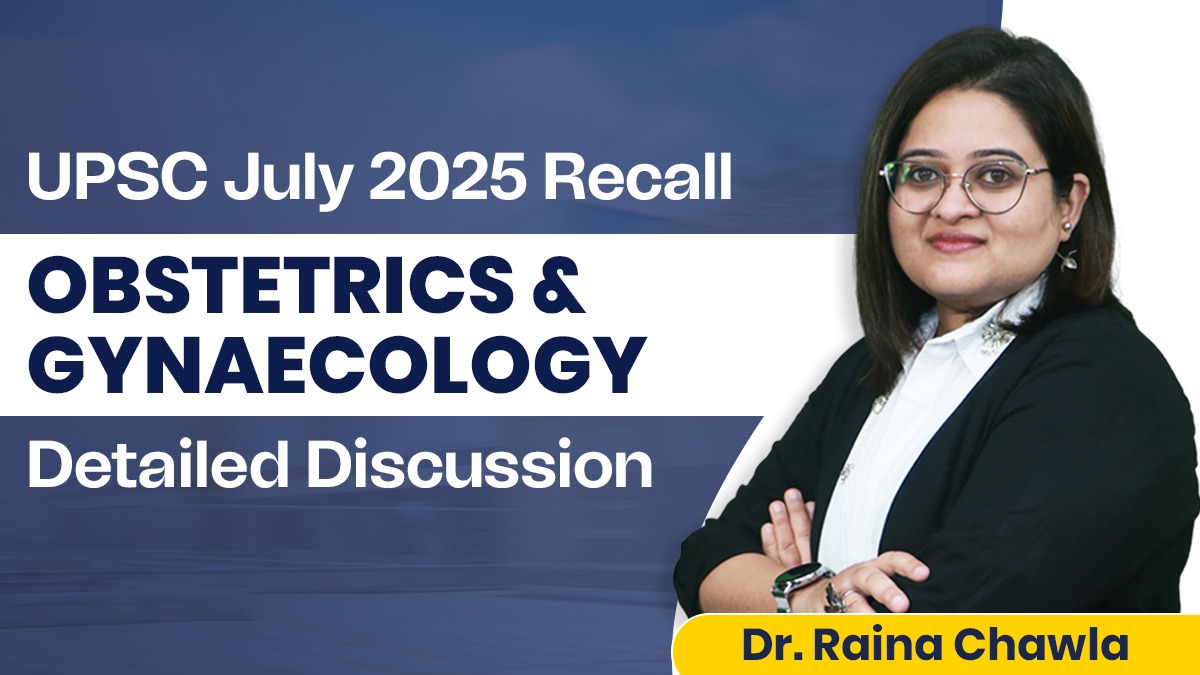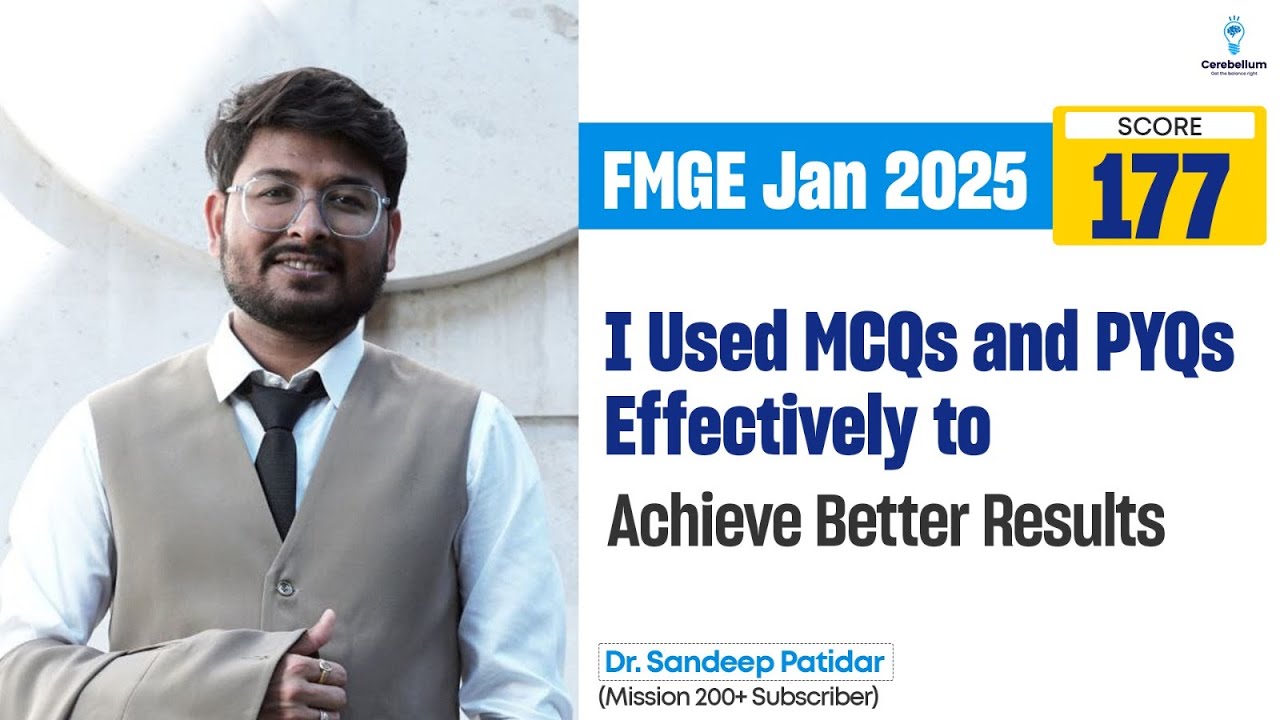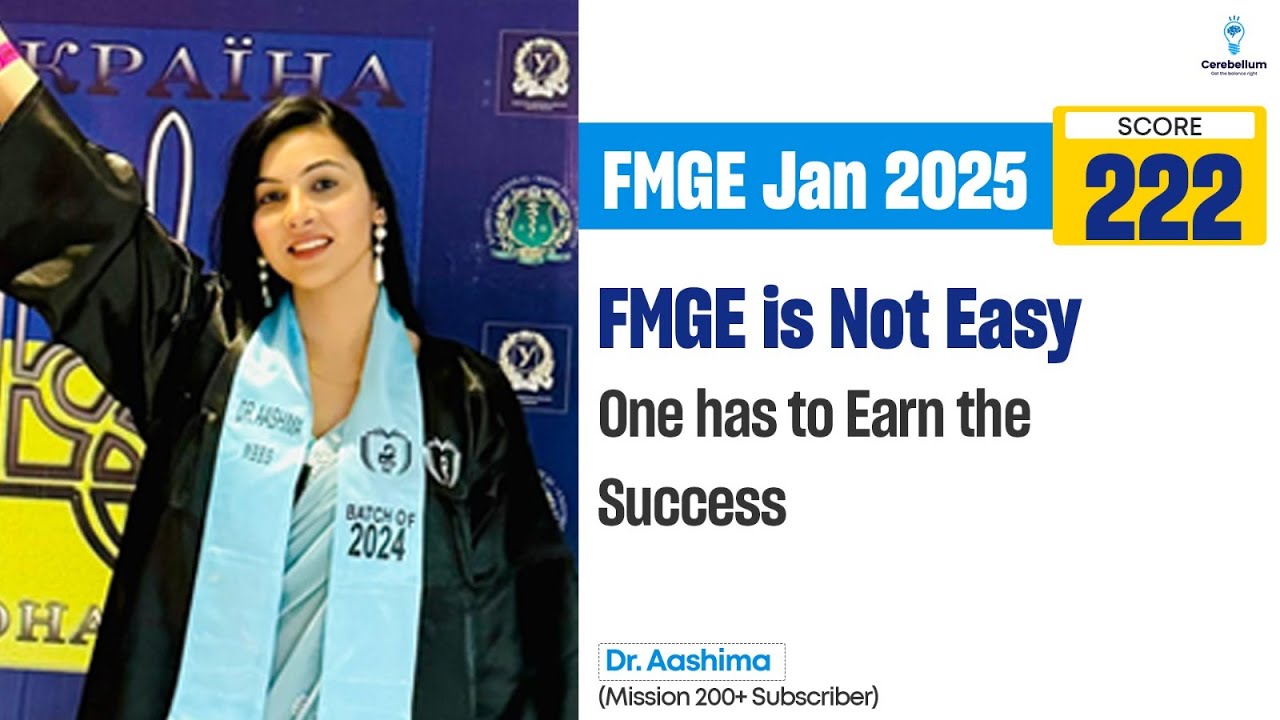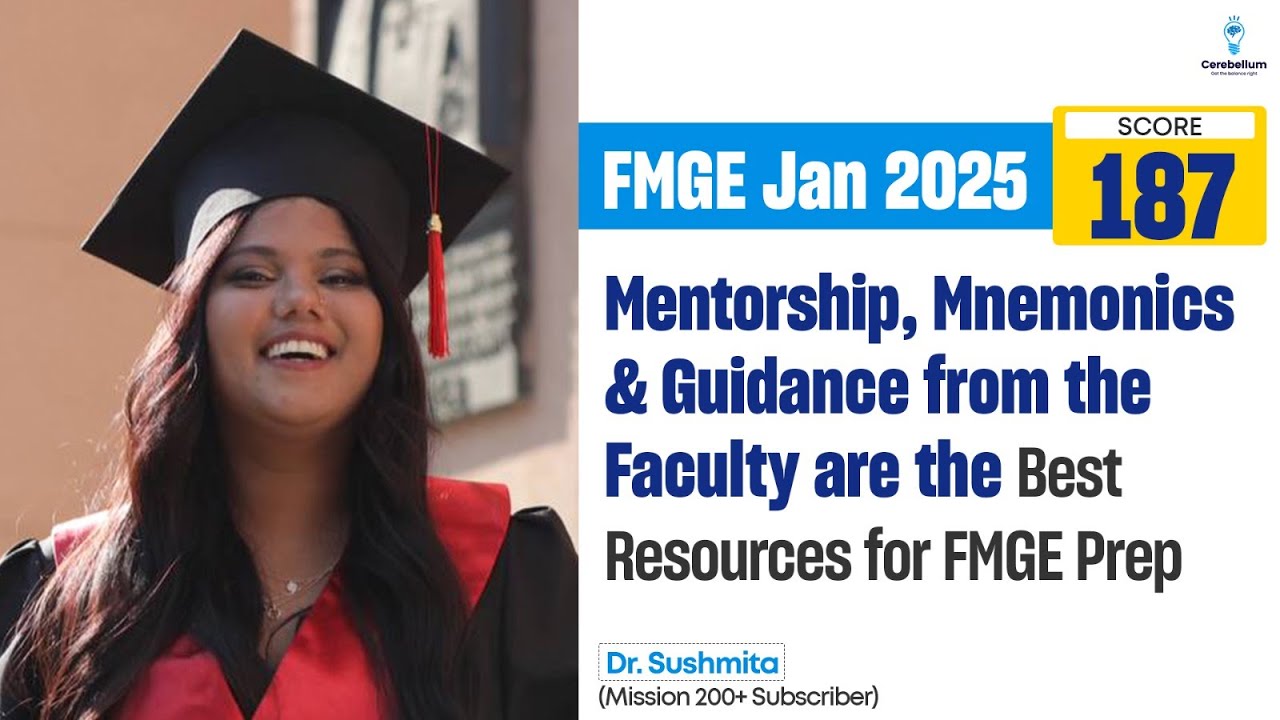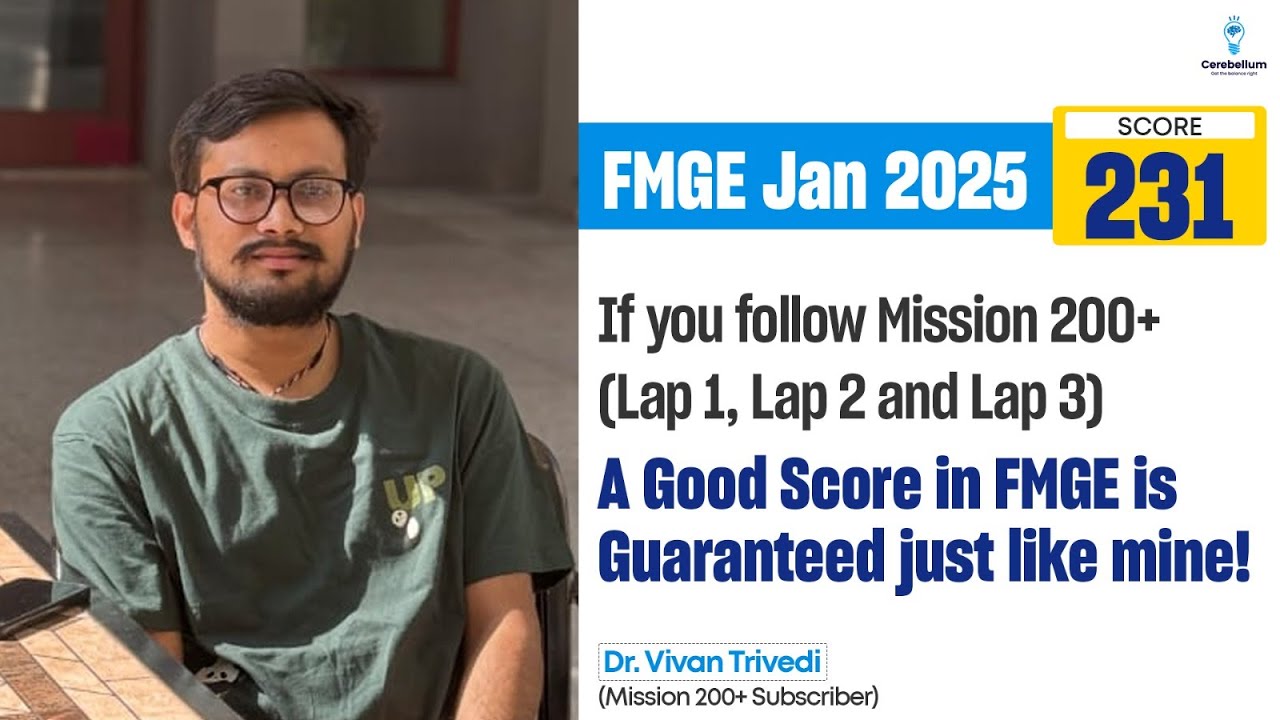When it comes to UPSC Medical Services Examination (CMS), the Obstetrics & Gynaecology section can be a make-or-break area. With an evolving pattern and more clinically integrated questions, it’s important to not just study, but study smart.
In this detailed recall session, Dr. Raina Chawla dissects the UPSC July 2025 paper, especially the OBGYN portion, bringing clarity to what was asked, what mattered, and what aspirants can learn from it. Whether you’re a first-timer or a repeater, this blog serves as a must-read analysis to understand recurring concepts, high-yield topics, and what UPSC seems to love in OBGYN.
What Was New in July 2025 OBGYN Paper?
- A noticeable tilt towards clinical decision-making and real-life obstetric scenarios
- Less factual mugging; more focus on application-based learning
- Increase in topics related to reproductive endocrinology, contraception, and labour complications
- Strong overlap with standard undergraduate textbooks and national protocols
Questions Discussed in the Session by Dr. Raina Chawla:
Q.1 Which of the following statements about HSG, as an operative procedure, are true?
- Tubal patency assessment following tuboplasty operation
- Diagnosis of uterine synechiae
- Detection of an IUD
- Diagnosis of a subserosal fibroid
Select the answer using the code given below
- 1,2 and 3
- 1, 2 and 4
- 1, 3 and 4
- 2,3 and 4
Q.2 Which of the following are indications of endometrial sampling?
- Endometrial tuberculosis
- Endometrial polyp
- Postmenopausal bleeding
- AUB
Select the correct answer using the code given below:
- 1,2 and 3
- 1,2 and 4
- 1,3 and 4
- 2,3 and 4
Q.3 A 30y old P3L3 presents in the Gyn Dept with acute adnominal pain and vaginal bleeding of short duration (1h). She gives a history of tubal ligation after the birth of the 3rd child. On examination, right adnexal tenderness was found, and os was closed. What is the probable diagnosis?
- Ectopic Pregnancy
- PID
- Appendicitis
- Complete abortion
Q.4 Which of the following statements is correct regarding audit in Obs and Gyn?
- It can replace the out-of-date clinical practice with better ones
- It is an efficient educational tool
- It should be based on scientific evidence with facts and figures
- It is not labour-intensive
Select the answer using the code given below
- 1,2 and 3
- 1, 2 and 4
- 1, 3 and 4
- 2,3 and 4
Q.5 Which of the following are poor prognostic factors in endometrial carcinoma?
- Estrogen and progesterone receptor positivity
- Her 2 neu gene expression
- Histologic types: papillary serous or clear cell carcinoma
- Aneuploid tumors
Select the correct answer using the code given below
- 1,2 and 3
- 1,2 and 4
- 1,3 and 4
- 2, 3 and 4
Q.6 For which of the following surgeries is indicated in a case of fibroid uterus?
- Symptomatic and failed medical management
- Size > 12 weeks
- Pedunculated fibroid
Select the correct answer using the code given below::
- 1,2 and 3
- 1 and 2 only
- 2 and 3 only
- 1 and 3 only
Q.7 Which of the following is measured without straining while examination under POP-Q system?
- Tvl
- Pb
- Gh
- Point D
Q.8 Which of the following are criteria for opting for Le Forte’s operation for surgical correction of pelvic organ prolapse?
- Procidentia in old age
- Unfit for long-duration surgery
- Associated uterine pathology
- Coital function no longer required
Select the correct answer using the code given below:
- 1,3 and 4
- 1 and 2 only
- 2, 3 and 4
- 1, 2 and 4
Q.9 Opening of the Bartholin’s duct is in the:
- Vestibule outside the hymen and the junction of the ant 2/3rd and post 1/3rd in the groove between the hymen and labium minus
- Groove between the labia majora and minora
- Superficial perineal pouch at the junction of ant 2/3rd and post 1/3rd
- Periurethral regio in ant 1/3rd aof labia minora
Q.10 Which of the following are Amsel’s diagnostic criteria?
- Vaginal pH > 4.5
- Positive Whiff test
- Presence of clue cells > 20%
- Positive bacterial vaginal culture
Select the correct answer using the code given below
- 1,2 and 3
- 1,2 and 4
- 1,3 and 4
- 2,3 and 4
Q.11 Which of the following are neonatal complications of maternal diabetes during pregnancy?
I. Hyperbilirubinemia
II. Hypercalcemia
III. Cardiomyopathy
IV. Hypoglycemia
Select the correct answer using the code given below:
(a) I, II and III
(b) I, II and IV
(c) I, III and IV
(d) II, III and IV
Q.12 Which of the following are the predictive factors for Fetal Growth Restriction (FGR)?
I. Low level of maternal 1st trimester Beta hCG
II. Abnormal uterine artery Doppler at 20–24 weeks of pregnancy
III. Fetal echogenic bowel on ultrasound
IV. Maternal medical disorder
Select the correct answer using the code given below:
(a) I, II and III
(b) I, II and IV
(c) I, III and IV
(d) II, III and IV
Q.13 Which of the following is the primary surveillance tool in the Growth Restricted Fetus?
- Uterine artery Doppler
- Umbilical venous pulsation
- Middle cerebral artery Doppler
- Umbilical artery Doppler
Q.14 Glands of Cloquet are:
(a) Lymphatic drainage of vulva
(b) Lymphatic drainage of cervix
(c) Lymphatic drainage of uterus
(d) Lubricating glands of vagina
Q.15 Causes of AUB are subdivided by the acronym PALM-COEIN. What are the characteristics of PALM causes?
I. Structural lesions
II. Diagnosed by ultrasound
III. Confirmed by histopathology
Select the correct answer using the code given below:
(a) I and II only
(b) I and III only
(c) II and III only
(d) I, II and III
Q.16 Daily suppressive therapy for HSV-1 and HSV-2 is:
(a) Valacyclovir 1g once daily
(b) Acyclovir 400 mg once daily
(c) Acyclovir 400 mg thrice daily
(d) Valacyclovir 1g twice daily
Q.17 Which of the following are the primary organisms involved in PID?
I. N. gonorrhoeae
II. Chlamydia
III. Mycoplasma hominis
IV. Candida albicans
Select the correct answer using the code given below:
(a) I,II and III
(b) I,II and IV
(c) I,III and IV
(d) II,III and III
Q.18 What are the characteristics of a dermoid cyst?
I. Germ cell ovarian tumour
II. Bilateral in 15–20% cases
III. Torsion is common
IV. Rupture is common
Select the correct answer using the code given below:
(a) I and III only
(b) II and IV only
(c) I, II and III
(d) III and IV
Q.19 Which one of the following is not a differential diagnosis of chronic inversion of uterus?
(a) Fibroid polyp
(b) Fungating cervical malignancy
(c) Cervical prolapse
(d) Gartner’s cyst
Q.20 A 25-year-old P1L1 presents to Gynaecology OPD with complaints of malodorous vaginal discharge. On examination, the discharge was greyish-white in colour and adherent to the vaginal wall. One of the following is a bedside diagnostic criterion for the causative organism?
(a) Presence of RBCs in vaginal smear
(b) Vaginal pH < 4.5
(c) Positive 10% potassium hydroxide test
(d) Positive NAAT test
Q.21 Which of the following factors are associated with cord prolapse during labour?
I. Malpresentations
II. Contracted pelvis
III. Stabilising induction
IV. Prematurity
Select the correct answer using the code given below:
(a) I, II, III and IV
(b) I, II and IV only
(c) I, II and III only
(d) III and IV only
Q.22 Detection of magnesium toxicity in a patient receiving magnesium sulphate is indicated by which of the following?
I. Loss of tendon reflexes
II. Increased respiratory rate
III. Chest pain/heart block
IV. Cardiac arrest
Select the correct answer using the code given below:
(a) I, III and IV
(b) II and IV only
(c) I and III only
(d) III and IV only
Q.23 Which one of the following is correct regarding postpartum psychosis?
(a) There is often no family history of psychosis.
(b) Its onset is usually within 4 days of delivery.
(c) Recurrence rate in subsequent pregnancy is 60–70%.
(d) Electroconvulsive therapy is the first treatment of choice
Q.24 Which of the following are correct in the treatment of cracked nipple?
I. Correct attachment (latch on) will provide immediate relief from pain and rapid healing.
II. If pain, mother should use a breast pump, and the infant is fed with the expressed milk.
III. Miconazole lotion is applied over the nipple as well as in the baby’s mouth if there is oral thrush.
Select the answer using the code given below:
(a) I and II only
(b) II and III only
(c) I and III only
(d) I, II and III
Q.25 Which of the following are correct regarding puerperal blues?
I. Its incidence is around 50%.
II. There is no specific metabolic or endocrine derangement.
III. Treatment is reassurance and psychological support.
Select the answer using the code given below:
(a) I and II only
(b) II and III only
(c) I and III only
(d) I, II and III
Q.26 The Matthews Duncan process has been described for:
(a) Marginal separation of placenta in normal labour
(b) Normal separation of placenta in normal labour
(c) Abnormal uterine contraction of labour
(d) Reposition of the uterus after inversion of the uterus
Q.27 A P1L1 lady, after 4 hours of delivery, is suffering from persistent, severe pain in the perineal region, rectal tenesmus, bearing down feeling and retention of urine. The probable diagnosis is:
(a) Cervical tear
(b) Vulval hematoma
(c) Supralevator hematoma
(d) Complete perineal tear
Q.28 According to WHO Intrapartum Care Guidelines 2018, which one of the following is correct about duration of first stage labour?
(a) Duration of latent phase of primigravida has not been established
(b) Duration of active stage of multigravida should not exceed 6 hours
(c) Duration of active stage of primigravida should not exceed 8 hours
(d) Duration of active stage of primigravida should not exceed 18 hours
Q.29 According to WHO Intrapartum Care Guidelines 2018, which of the following are correct about birthing position?
I. For a woman without epidural analgesia, adoption of birthing position is the individual woman’s choice.
II. For a woman without epidural analgesia, upright birthing position may be adopted.
III. For women with epidural analgesia, lithotomy and supine position only are recommended.
Select the answer using the code given below:
(a) I and II only
(b) I and III only
(c) II and III only
(d) I, II and III
Q.30 Twin pregnancy should have ultrasound at 10–13 weeks to confirm which of the following?
I. Number of fetus
II. Viability of fetus
III. Chorionicity of twins
IV. Malformation in either fetus
Select the correct answer using the code given below:
(a) I,II and III
(b) I and III only
(c) II and IV only
(d) I, II, III and IV
Q.31 Chadwick’s sign describes:
(a) The dusky hue of the vestibule and anterior vaginal wall visible at about 8th week of pregnancy
(b) Softening of cervix at 6th week of pregnancy
(c) Apposed abdominal and vaginal fingers below the body of the uterus
(d) Regular and rhythmic uterine contraction which can be elicited during bimanual examination at 4–8 weeks of pregnancy
Q.32 Which of the following treatments are recommended for a pregnant woman suffering from sickle cell disease?
I. Folic acid 1 mg daily
II. Azathioprine
III. Penicillin prophylaxis
IV. Thromboprophylaxis with low molecular weight heparin
Select the correct answer using the code given below:
(a) I, II and III
(b) I, II and IV
(c) I, III and IV
(d) II, III and IV
Q.33 Which of the following are contraindications to External Cephalic Version (ECV) in breech?
I. Pregnancy less than 36 weeks
II. Multiple pregnancy
III. Previous cesarean delivery
IV. Rhesus isoimmunization
Select the correct answer using the code given below:
(a) I, II and III
(b) II, III and IV
(c) I, II and IV
(d) I, II and III
Q.34 Which of the following hematological findings are seen in pregnant women with thalassemia trait?
(a) Raised HbA₂ and low MCV
(b) Low MCHC
(c) Low serum total iron binding capacity
(d) Low HbA₂ and raised MCV
Q.35 The best drug for maintenance therapy of Systemic Lupus Erythematosus (SLE) during pregnancy is:
(a) Hydroxychloroquine
(b) Sulfasalazine
(c) Tacrolimus
(d) Progestins
Q.36 Which of the following maternal complications can be seen in hyperemesis gravidarum?
I. Wernicke’s encephalopathy
II. Hepatic failure
III. Hypoprothrombinemia
IV. Convulsions
Select the correct answer using the code given below:
(a) I, II, III and IV only
(b) I, III and IV only
(c) I, II and IV only
(d) II and III only
Q.37 The commonest ovarian tumour seen during pregnancy is:
(a) Benign cystic teratoma
(b) Mucinous cystadenoma
(c) Endometrioma
(d) Adenocarcinoma ovary
Q.38 Which of the following statements are correct regarding shoulder dystocia?
I. It can be predicted during early labour
II. Anencephaly is a risk factor
III. Turtle neck sign is present
IV. Episiotomy should always be given
Select the answer using the code given below:
(a) I, II and III
(b) I, II and IV
(c) I, III and IV
(d) II, III and IV
Q.39 A primigravida at 38 weeks pregnancy was put on oxytocin drip in view of slow labour at the rate of 30 mIU/min by the newly appointed registrar. She complains of confusion and starts throwing fits. What electrolyte imbalance is expected to have happened in this case?
(a) Hypokalemia
(b) Hyponatremia
(c) Hypocalcemia
(d) Hypernatremia
Q.40 Which of the following factors favor posterior position of the vertex?
I. Android pelvis
II. Low inclination pelvis
III. Attachment of placenta on the anterior wall
IV. Primary brachycephaly
Select the correct answer using the code given below:
(a) I, II and III
(b) I, II and IV
(c) I, III and IV
(d) II, III and IV
What Does This Mean for Your Preparation?
If you’re preparing for UPSC CMS 2026, this is your chance to recalibrate. Focus more on:
- Conceptual clarity in reproductive physiology and pregnancy management
- Real-case scenarios and treatment pathways
- National guidelines like MTP Act, WHO protocols, and National Health Programs for Women
- Frequently tested areas like PIH, PPH, Eclampsia management, and STIs in pregnancy
The pattern is clearly shifting towards smart, integrated learning—the days of rote memorisation are behind us.
Also Read: NEET PG 2025: The Last 10 Days Strategy to Improve Your Rank
Smarter Prep Starts Now
If you’re aiming for the next round of UPSC, don’t let this recall go unnoticed. Use Dr. Raina’s insights as your blueprint to refine your OBGYN prep. Understanding the pattern means half the battle is already won.
Final Takeaway
UPSC CMS isn’t just testing your memory—it’s testing your clinical sense. And that’s exactly what Dr. Raina Chawla’s analysis brings to the table. From trend mapping to priority topics, this July 2025 recall is a goldmine for smart aspirants. Revisit your strategy, focus on high-yield areas, and remember: clarity beats cramming, every single time.
Stay tuned for more subject-wise recalls, and don’t forget to share this with your UPSC prep group. Let’s learn, adapt, and rise together.
Download Cerebellum NEET PG Preparation Android app
Download Cerebellum NEET PG Preparation iOS app
Download Cerebellum NEET PG Preparation iphone app

